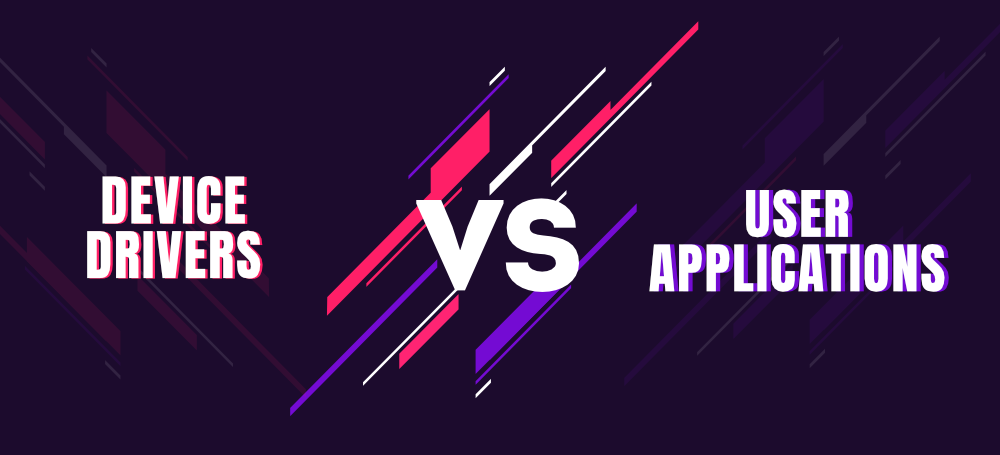设备驱动程序和用户应用程序之间的区别
驱动程序或设备驱动程序是有助于在操作系统和计算机的不同硬件之间进行通信的软件。它们充当中介,以便计算机可以从硬件设备发送或接收数据。它们控制连接到计算机的硬件。司机确保互动顺利进行。由于驱动程序是软件,它们是用低级语言编写的。
驱动程序类型
- 内核模式设备驱动程序:它作为内核模式操作系统组件的一部分在内核模式下执行,这些组件管理输入输出操作、线程、安全性。
- 用户态设备驱动:用户自带的设备也需要驱动才能函数。这些驱动程序称为用户模式设备驱动程序。
用户应用程序也称为应用程序软件,是为用户的特定目的而创建的特殊软件。用户应用程序直接与最终用户通信。这些应用程序旨在执行特定功能或一组功能。这些软件是用高级语言开发的。有不同类型的用户应用程序,如网络浏览器、文字处理器、电子表格、图形软件等。

以下是设备驱动程序和用户应用程序之间的差异表: Device Drivers User Applications 1. It is an intermediary between the operating system and hardware. These are designed for users for specific purposes. 2. It is coded in low-level languages. It is coded in high-level languages. 3. Their role is to control the hardware. Their role is to perform a specific task that is needed by users. 4. There are two types: Kernel mode and User mode. There are many types: Web Browser, Presentation software, Word Processor etc. 5. Examples of device drivers: USB Drivers, Floppy Drives etc. Examples of user applications: Microsoft Word, MS Excel.